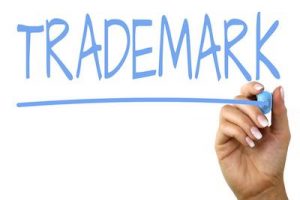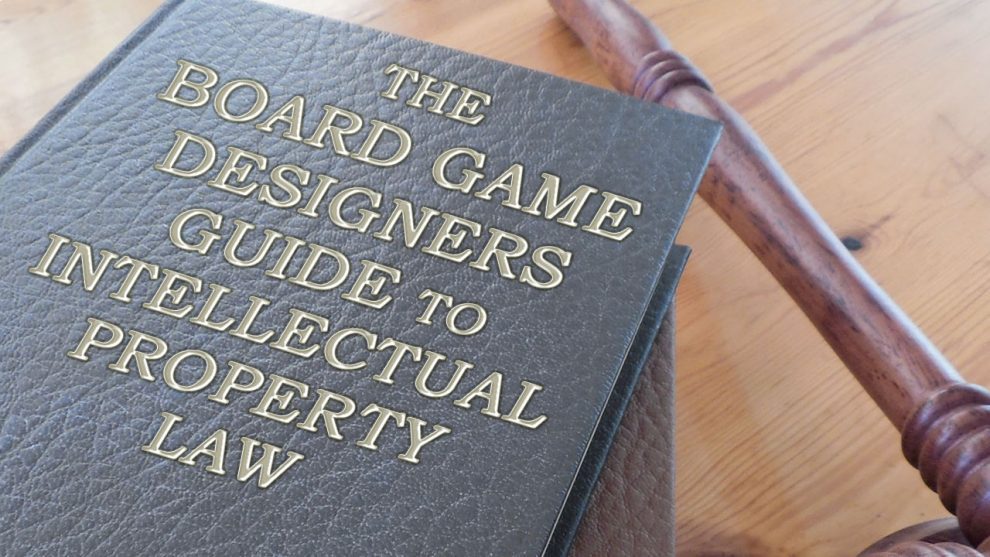The laws involved in protecting board games are complicated. Various websites, forums, and Reddit threads attempt to answer questions from game designers on what they are allowed to do when designing their games as well as how to protect certain aspects of their games.
One common question from game designers is how can they prevent third parties from stealing their games? This is a legitimate and viable question because a game designer typically introduces their game designs into a public forum to solicit feedback, which may be implemented into the end-product. The first instinct when designing a game is to share your design with as many people as possible. Have the community of players and designers tear apart your game so that you gather valuable input to implement and make the end-product as polished as possible. With this kind of development process, the question arises: “What prevents someone from just stealing my game?”
This is where having a basic understanding of Intellectual Property (IP) law is helpful.
To date, there does not appear to be a simplified online guide, authored by an attorney, which explains intellectual property law as it relates to board games. Nevertheless, to be clear, this article is not providing legal advice. The goal of this article is to provide game designers with an easy-to-understand guide to (IP) law, which is mostly federally regulated. It is laid out in three sections:
- What legal protections are possible?
- What legal protections are practical?
- What is typically done?
Section 1: What legal protections are possible?
Different subreddits (i.e. r/legaladvice and r/boardgames) and other various websites frequently confuse the various types of intellectual property protection. So, let’s begin with the basics.
IP is a category of property that includes intangible property of the human brain, or in short, one’s ideas. Inventions, poetry, movies, brand names and logos, and many other “creations of the mind” are captured under IP.
IP tends to be divided into four main sub-categories: 1) patents; 2) copyright; 3) trademark; and 4) trade secrets. This article will cover the first three of these with regard to US IP laws only. It will not discuss trade secrets, since board games rarely, if ever, concern proprietary information that is vital to the publishers’ or companies’ survival.
Patents

A patent gives its owner the legal right to exclude others from making, using, or selling the patented invention. In summary, this means that the patent owner has the right to sue and/or seek judicial orders to compel other people to stop if they are recreating their invention as specified in the patent. The mechanics and components of a game may be patented if it meets four requirements of patentability: 1) It has to be “patentable subject matter” (in the United States these are processes, machines, manufactures, and compositions of matter)1; 2) It has to have utility (i.e. it has to be useful); 3) it has to be novel and 4) It has to be nonobvious. The final two requirements are demanding, as it means that no one can have previously invented the same thing and either patented or made it public, and that the invention is not obvious to an ordinarily-skilled person.
Compared to the other categories of IP, the legal standards for obtaining a patent are very strict. A person must apply for a patent with the United States Patent and Trademark Office (“USPTO”), and, if granted, the patent can last for up to 20 years from the date of application. Some notable games that have been patented include Monopoly2, Magic: The Gathering3, Life4, Battleship5, and Scrabble6. Design patents are also a way to protect the ornamental aspects of a game, such as the shape and color of playing pieces, so long as they are not functional or do not serve a utility in the game.
Copyright
Copyright law protects original works of authorship and takes effect as soon as a work is “fixed” in a tangible medium of expression. A tangible medium of expression could be, for example, a writing of the work, a drawing on a canvas or a digital screen, a sculpture, etc. As applied to games, a tangible medium of expression includes things like illustrations, artwork, and visual appearance of a game. It also includes any expressive text that is incorporated onto the cards, board, etc., or the rulebook.
Trademarks
Trademarks are words, symbols, and devices that indicate a source of origin for a good or service7. They distinguish the products of one seller from others in the marketplace. Federal registration with the USPTO is not necessary to confer protection since trademark rights begin to accrue as soon as the mark is used in commerce. Nevertheless, there are many advantages to registering a trademark. These include a public record of ownership, constructive notice (i.e. would-be infringers are presumed to have known of the existence of your trademark), and a number of legal presumptions that make prevailing in a lawsuit for trademark infringement significantly less expensive.
Section 2: What legal protections are practical?
Patents
While board games, as well as game boards, parts, and certain methods of play, can be patented if they fulfill the strict requirements listed above, it is usually impractical to try and get a patent for a tabletop game. Currently, many games on the market are reworks of, or variations on gameplay mechanics of existing games such as worker placement, area control, deck-building, etc. Due to this, these types of games would probably struggle to meet the strict requirements of novelty and nonobviousness.
More relevant, however, is money. Most game designers do not have the private financial means to afford paying the attorney’s fees and other costs associated with applying for a patent, which can run into the tens of thousands of dollars. These costs can run even higher when incorporating costs for patent enforcement. So, while patents theoretically can protect certain aspects of a game, they are not financially practical to pursue for most game designers.
Copyright
A designer can, however, obtain copyright protection for several characteristics of a game. Minis, cards, box artwork, game board art, or other components of a game may be protectable as pictorial, graphic, or sculptural works. In addition, text-heavy games such as RPGs and other word-based games may also be protected as literary works under the Copyright Act of 1976. Depending on the context, copyright protection can be extended to fictional characters, if they have “distinctive character traits and attributes” and are “sufficiently delineated to be recognizable as the same character whenever it appears.”8 This is most applicable to things such as modules and campaigns for tabletop RPGs.
However, what is paramount to understand is that a game’s mechanics and conceptual rules—the “heart” of a game, are uncopyrightable. The Copyright Office’s factsheet on games makes this explicit:
Copyright law does not protect the idea for a game, its name or title, or the method or methods for playing it. Nor does copyright protect any idea, system, method, device, or trademark material involved in developing, merchandising, or playing a game. Once a game has been made public, nothing in the copyright law prevents others from developing another game based on similar principles. Copyright protects only the particular manner of an author’s expression in literary, artistic, or musical form9.
In theory, then, if someone were to replicate the basics of a game in terms of rules, but write them differently, and did not copy any artwork, visuals, text, etc., then that could potentially be acceptable under copyright law.
Trademark

Trademark protection is perhaps the most relevant protection a designer can pursue for their game. However, it does not protect the whole game. It is used to protect the names, logos, slogans, and other distinctive aspects of the games. Examples of trademarks in games include the “tap” symbol and the mana symbols in Magic: The Gathering, and the D&D dragon logo. This prevents other copycat games or designers from using the name of your game or other distinctive aspects of your game in order to fool your consumers into thinking that their product is in fact your product. Trademark applies even in situations where a logo, name, etc. is “confusingly similar” to the trademark-protected aspects of your game.
“Trade dress,” which refers to the overall image and appearance of the game, includes its size, shape, colors, graphics, and packaging, and may also be protectable if it’s considered to be “inherently distinctive” (i.e., people immediately recognize X game merely by looking at the package) or have acquired distinctiveness through secondary meaning. Some examples of inherently distinctive trade dress include the eggshell blue of Tiffany boxes, the fluted shape of a Coca-Cola bottle, and the shape of an iPhone.
Section 3: What is typically done?
For the text in rules, cards, and other components, as well as any artwork on the box, game board, card, etc., copyright protection is conferred as soon as they are fixed, so registration isn’t strictly necessary. However, registration is relatively inexpensive ($35 in the United States) and can give you the advantage of 1) presumption of ownership of the copyright and 2) a date of registration denoting ownership of the copyright. Even so, copyright registration for these components is rare among game designers.
Game names, logos, and slogans are typically the first things to be trademarked. The first step before registration though would be to conduct a trademark search to see if there is already an existing trademark for whatever name/logo/slogan you are trying to protect to ensure you do not accidentally infringe on another person’s mark. Additionally, if you feel that your box design, game board design, card layout, etc. is sufficiently distinctive to warrant trade dress protection, then this is a potential avenue to explore.
A common law trademark is a trademark established solely through use in commerce in a specific geographic area. While you still have common law protection for a trademark without registration, federal registration will give you the “presumption of validity,” without needing to go through the process of proving that 1) You own the trademark; 2) You have an established reputation with the mark; 3) your reputation has been affected because of someone else’s use of the mark; and 4) people were deceived into thinking they bought from you when they did not.
In short, if you want to err on the side of caution, opt for copyright and trademark registration.
For copyright: https://www.copyright.gov/registration/
For trademark: https://www.uspto.gov/trademarks/basics/trademark-process
As a general matter, it is wise to have legal counsel ready when it comes to protecting your products. The goal of this article is to provide game designers with an easy-to-understand guide to IP law, and provide general legal principles to help game designers. Designers should consult with counsel about specific questions that apply to them. For a reasonable fixed rate, there are many attorneys out there who can help walk you through “due-diligence” searches for existing trademarks and/or copyrights as well as how to register your own copyrights and trademarks. They can also review any contract, NDA, etc. that pertains to IP and commercial rights when dealing with a mass-market publisher. Moreover, an experienced attorney can help draft a cease-and-desist letter if you find someone is infringing on your IP, or conversely, if someone has sent you a letter claiming you have infringed on theirs. Legal posturing is often used as a scare tactic, whether the alleged claim of infringement holds water or not. In either case, be prepared.
- https://www.uspto.gov/web/offices/pac/mpep/s2106.html
- United States Patent No. 2,026,082 (filed Aug. 31, 1935).
- United States Patent No. 5,662,332.
- United States Patent No. 56,561.
- United States Patent No. 1,998,301.
- United States Patent No. 2,752,158.
- 15 U.S.C. § 1127. Nontraditional marks, including colors, sounds, or smells, are eligible for trademark protection if they indicate a source of origin.
- D.C. Comics v. Towle, 802 F.3d 1012, 1019-21 (9th Cir. 2015).
- U.S. Copyright Office Factsheet FL-108: Copyright Registration of Games (Dec. 2011).







After hours of researching and confusion this blog explains everything a game developer needs to know and what steps are available to them when it comes to protecting their product. Thank you Thuan.
Leder Games has an excellent page on their site which explicitly lays out their “Policy on Fan Art and Merchandise” which, when distilled down to its essence, says “you can’t use our art to sell anything”. But it also states that “Unique and artistic interpretations of our art, characters, games, and any related features or gameplay mechanics are allowed.”
This is a great balance between wanting to foster community and love for their games, with protecting their intellectual property and work product.
From: https://ledergames.com/pages/leder-games-policy-on-fan-art-and-merchandise
How long is the yugioh trade mark good for?
Luis, I’m not a lawyer, and Thuan can respond to this directly if he chooses, but a quick search seems to indicate that trademarks never expire..
This was very helpful . Thank you